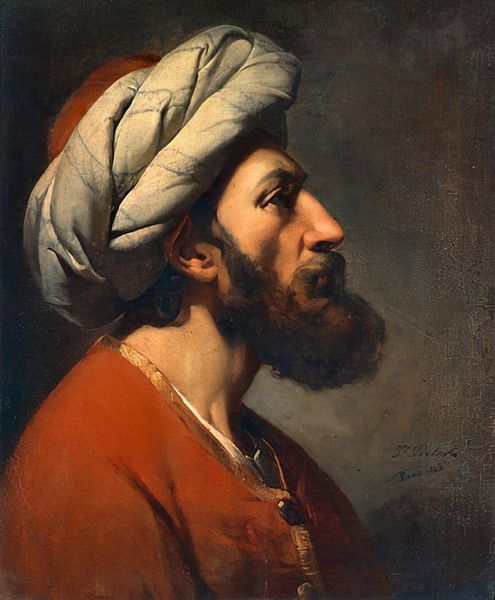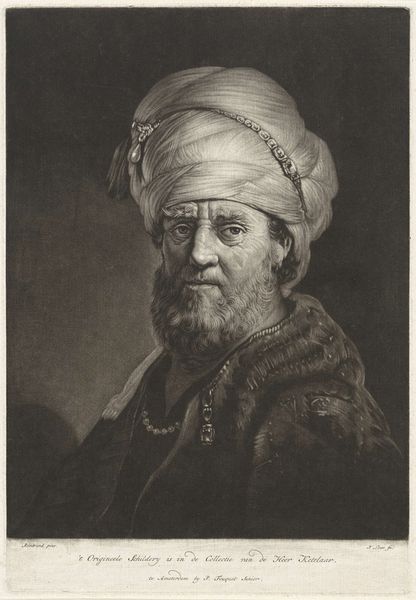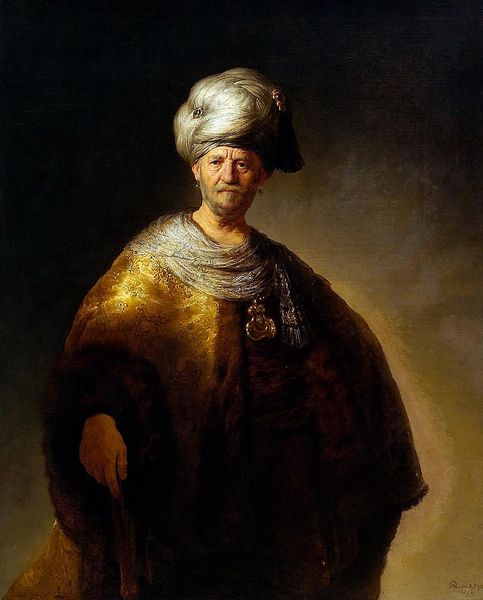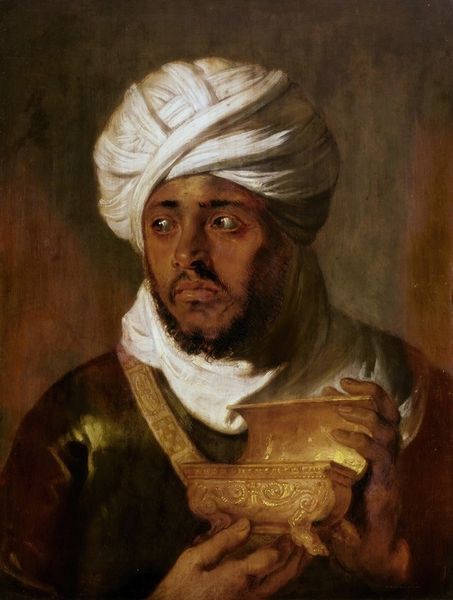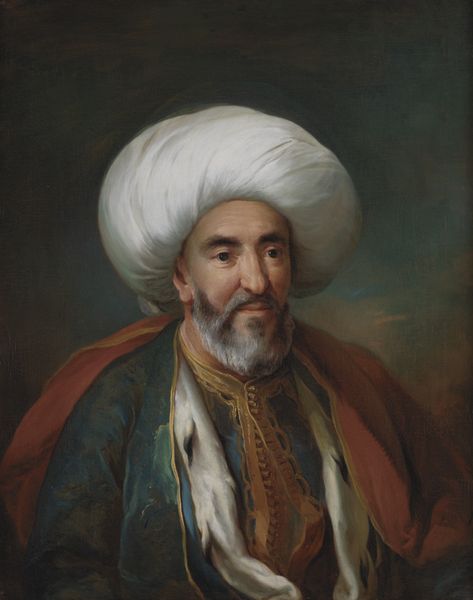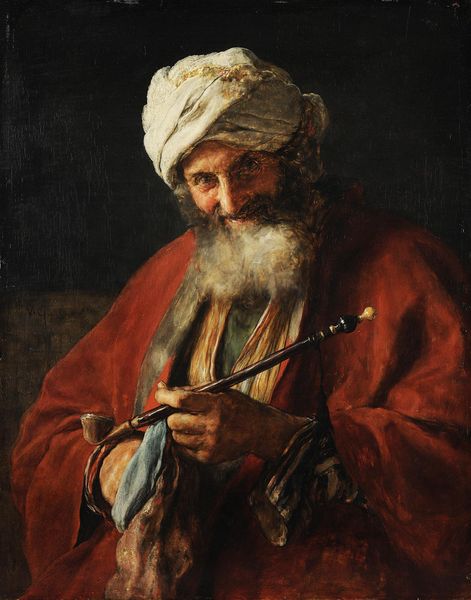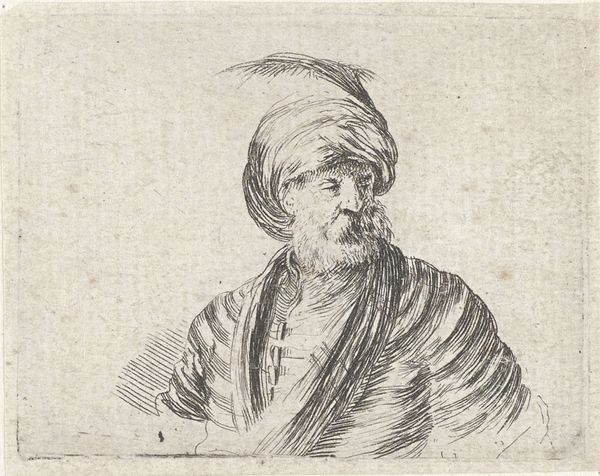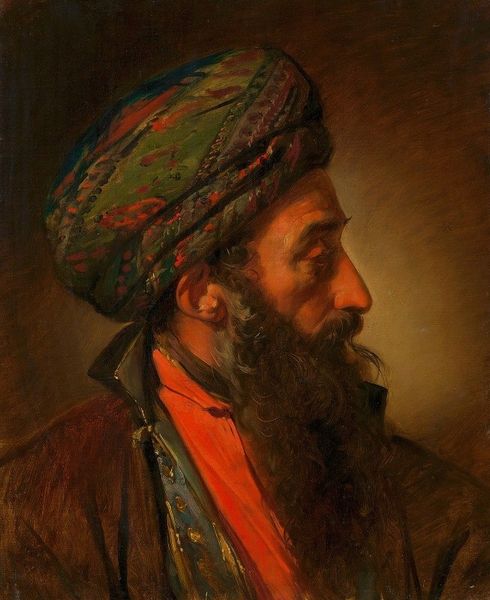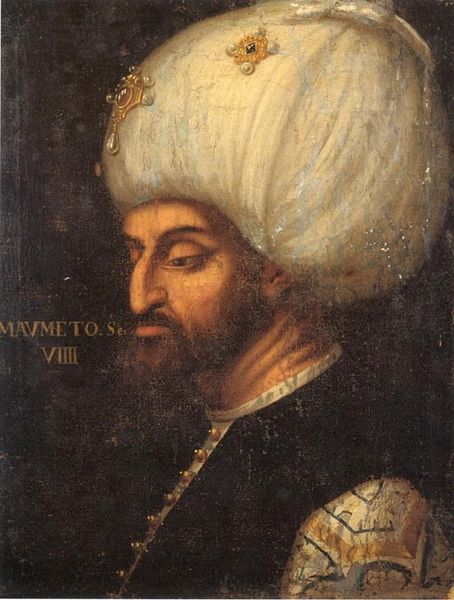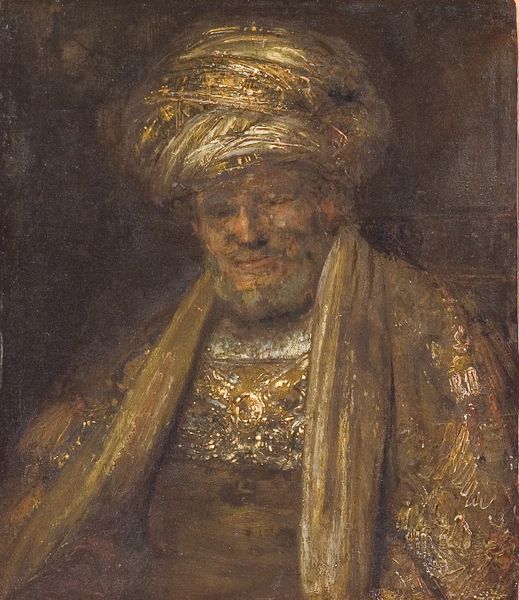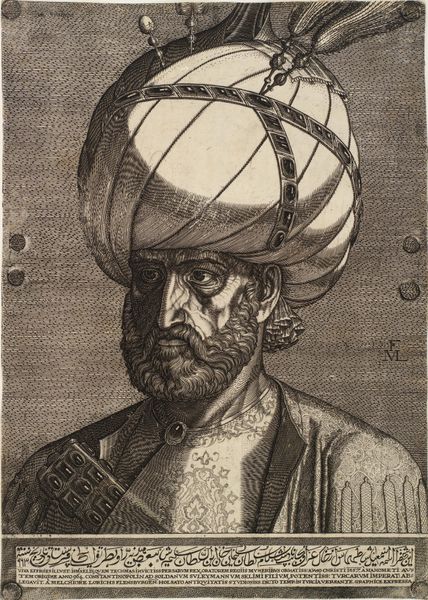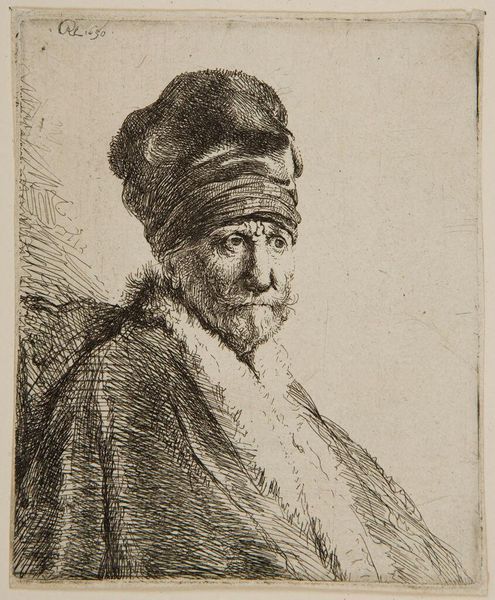
painting, oil-paint
#
portrait
#
figurative
#
baroque
#
portrait
#
painting
#
oil-paint
#
figuration
#
intimism
#
history-painting
Copyright: Public Domain: Artvee
Editor: Here we have Rembrandt van Rijn's "Man in Oriental Clothing," painted in 1635 with oil paint. The texture looks so rich! What strikes me most is the turban—it’s so elaborate. What do you see in this piece? Curator: Beyond the opulent textures and Rembrandt's masterful rendering of light, this portrait raises interesting questions about representation and cultural exchange in the 17th century. How do we interpret Rembrandt's interest in "oriental" dress? Is it a genuine appreciation for other cultures, or does it exoticize the sitter, placing him in a stereotyped role for a Western audience? Editor: That’s interesting! I hadn't considered that perspective. I was so caught up in the artistry itself that I missed the potential cultural implications. Curator: The idea of "Orientalism" – the West’s depiction of Eastern cultures – encourages us to consider the power dynamics at play. This wasn’t a neutral depiction but constructed within a specific social and political context. Does the sitter have agency, or is he merely a prop in Rembrandt's artistic vision? What does the work tell us about Dutch society's view of the "Orient" at this time? Editor: So, by understanding the period's social context, we can question the painting's representation of identity? I thought it was just a historical portrait. Curator: Precisely. Examining art through an intersectional lens encourages a more nuanced understanding of its subject. How race, class, and gender are portrayed matters and affects contemporary viewpoints. It changes how we engage with art. Editor: Wow, I'll never look at historical portraits the same way again! Curator: And that is the point, to continually question and expand your thinking.
Comments
rijksmuseum about 2 years ago
⋮
Rembrandt plays with light in a singular manner. Here it floods the man’s turban and the right side of his face like a powerful spotlight. The left side remains in shadow. Such character-like heads – not portraits – were popular in the 17th century. Called ‘Turkish tronies’, they were widely copied and imitated from an early date.
Join the conversation
Join millions of artists and users on Artera today and experience the ultimate creative platform.
